Google Nexus 4 Review - Google's new Flagship
by Brian Klug on November 13, 2012 8:45 AM EST- Posted in
- Smartphones
- LG
- Android
- Mobile
- APQ8064
- Nexus 4
- Android 4.2
- MDM9215
The Nexus 4 is based around a 1.5 GHz Qualcomm Snapdragon S4 Pro SoC, the quad core Krait APQ8064 with Adreno 320 GPU, which is still built on a 28nm process. The combination of APQ8064 for AP and MDM9x15 for baseband is Qualcomm's Fusion 3 platform, and the Nexus 4 and Optimus G are the first phones to market based on that platform. This is a relatively unique opportunity for Nexus, which until recently wasn't really first to market with the latest and greatest silicon.
A while ago we posted our Nexus 4 and Nexus 10 performance preview. At that point we still had a lot of testing to perform, and many people noted that the Nexus 4 performance was far behind the LG Optimus G despite it being based on the same platform. Later, some people noticed that I had uploaded another set of results from GLBenchmark 2.5 to the online result browser with much better performance. The difference wasn't some over the air software update but rather that I was running some of the tests with the Nexus 4 in a ziplock bag inside the freezer to mitigate any condensation problems, and simultaneously nail down any possible thermal throttling.
I've re-run everything and can confirm obviously that there was thermal throttling going on affecting some of the results, and have included the new results wherever there was a deviation from previous. For those wondering why the LG Optimus G wasn't affected in spite of it having the same platform, the reason is because the results from the Optimus G were run in parts due to some instability affecting its ability to run a complete set of tests without crashing. The Nexus 4 has newer drivers that don't crash during a full GLBenchmark 2.5 run but as a result run the device long enough for thermal throttling to kick in.
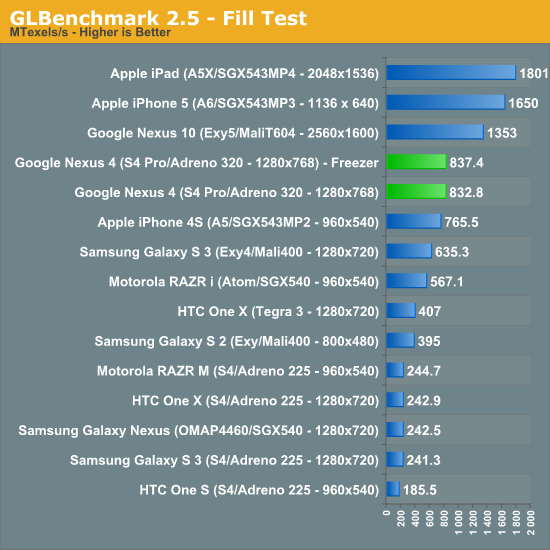
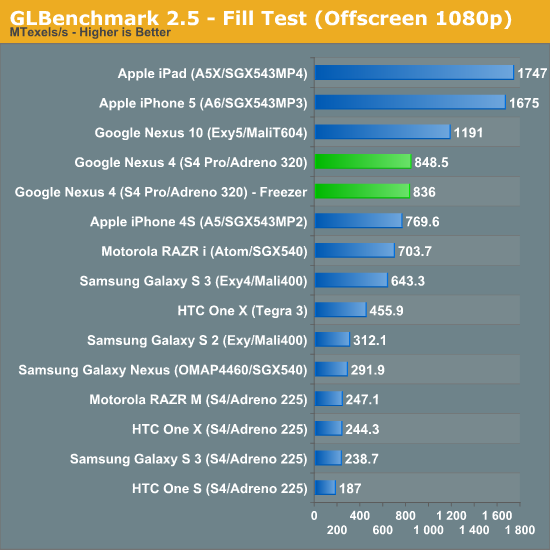
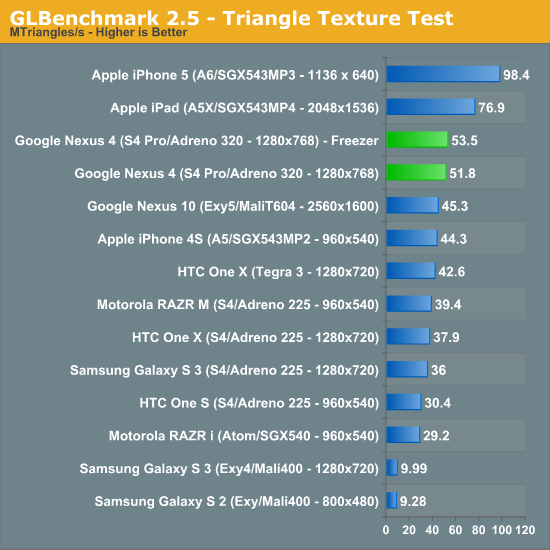
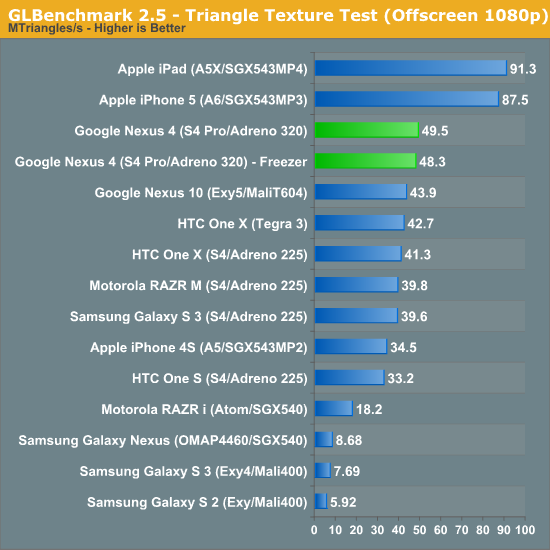
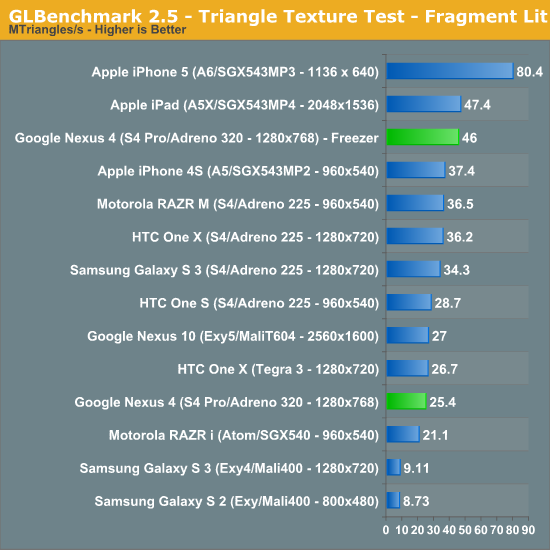
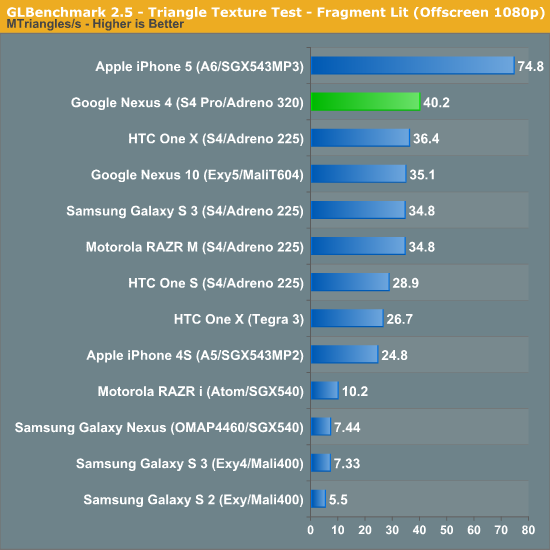
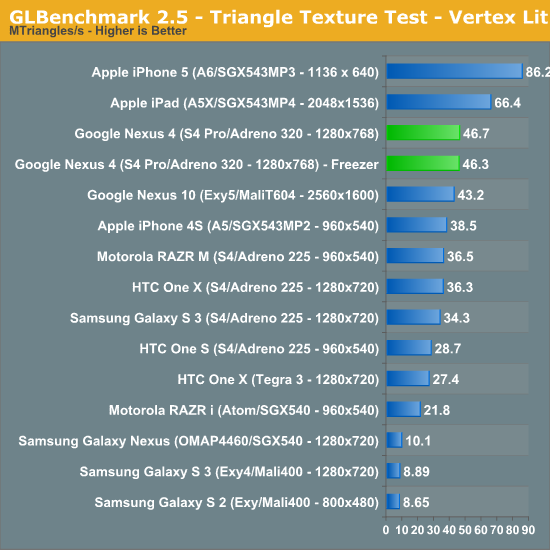
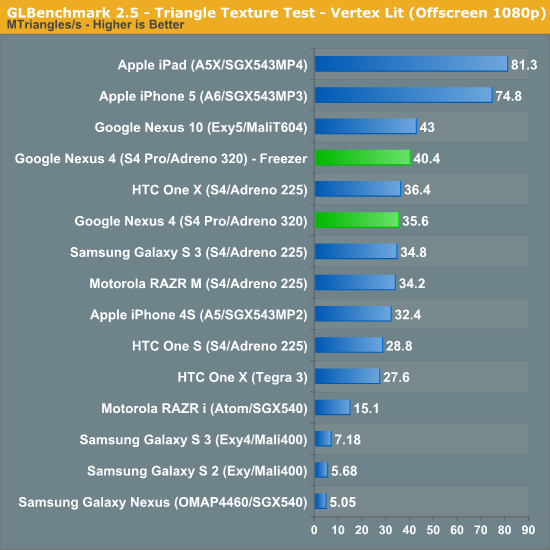
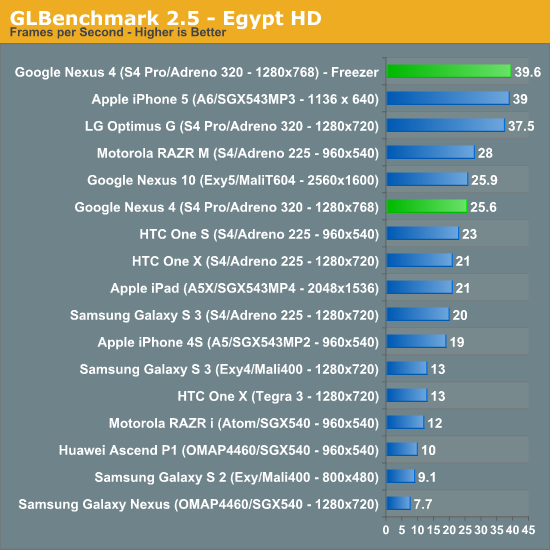
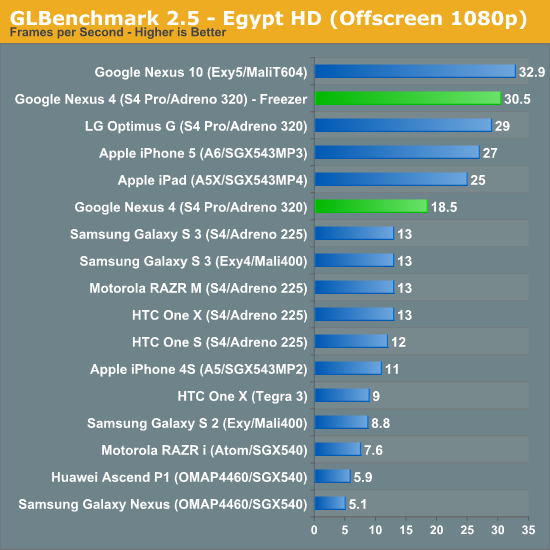
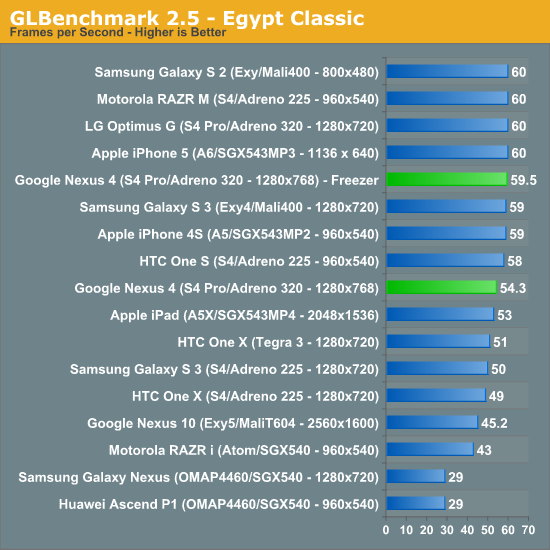
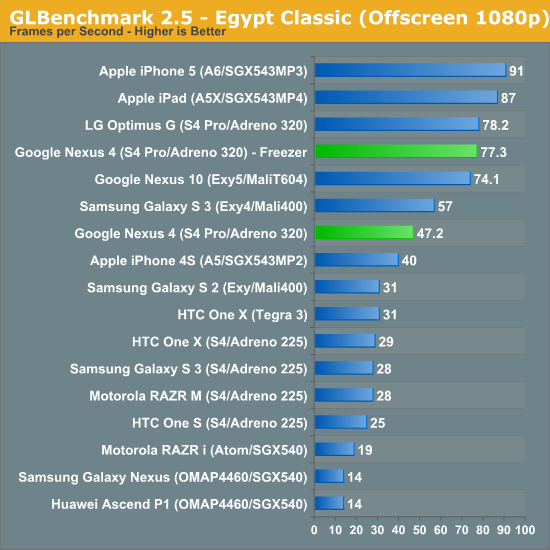
The result of the tests in the freezer results that are much closer to what we'd expect based on the APQ8064 MDP/T runs and the Optimus G numbers I saw in Korea.
When it comes to the CPU side of things there were results also affected by thermal throttling. I spaced some of those runs out (unintentionally) enough that performance didn't change, but for other things it did affect performance. I can't tell what GPU clocks end up being when the SoC decides to throttle, but it is possible to nail down what CPU performance state APQ8064 settles down into when there's throttling going on by looking at the state tables.

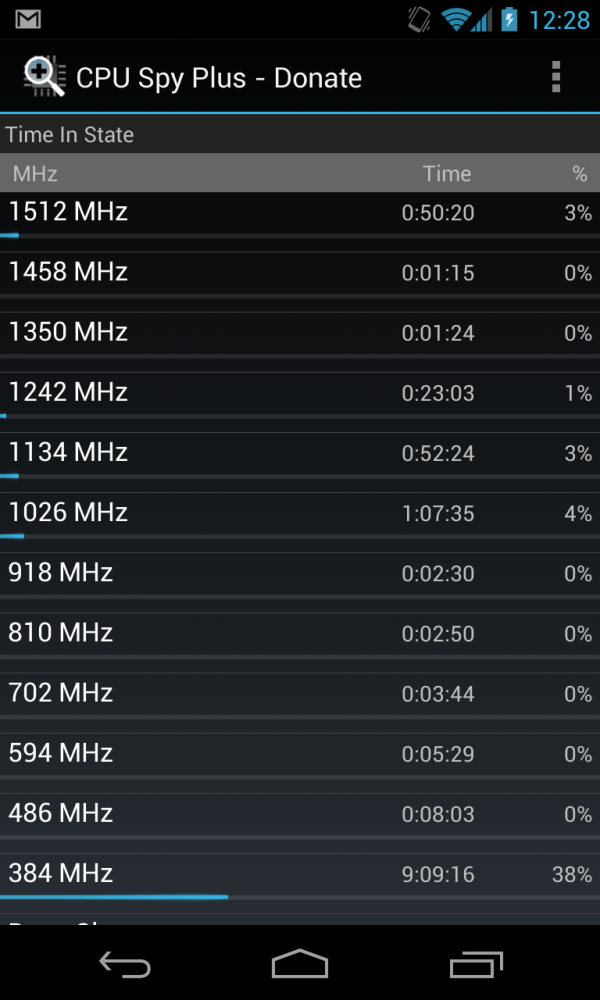
Left - 1.134 GHz during throttling (running tests), Right - All the performance states
I can see the Nexus 4 not use any of the performance states above 1134 MHz when it's getting hot, as shown in the images above. I've tweeted a link to the pastebin for thermald.conf which I believe configures the thermal cutoffs and will be interesting to kernel hackers trying to play with these values.
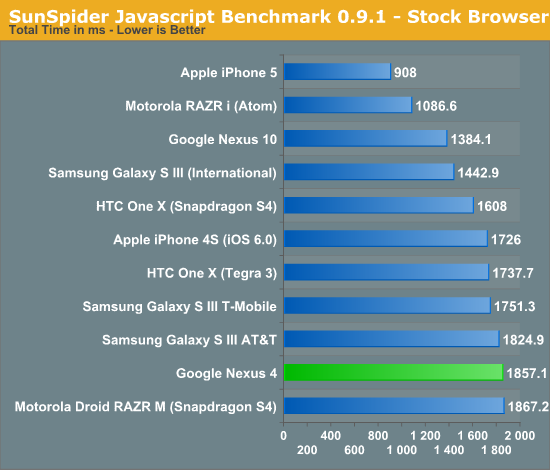
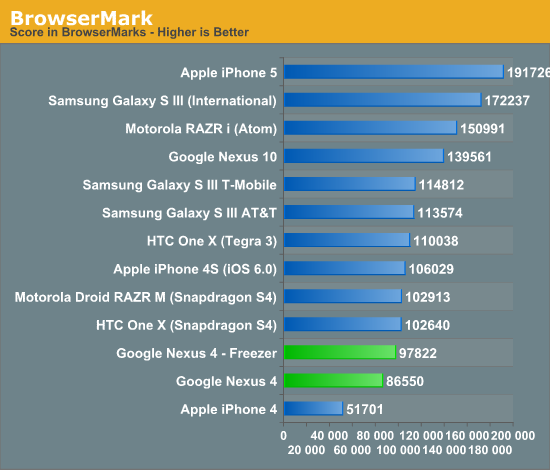
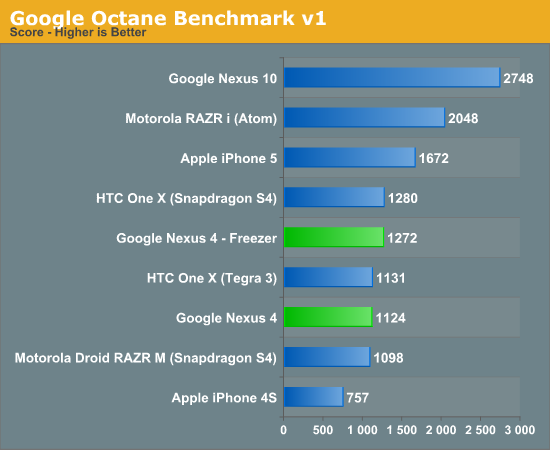
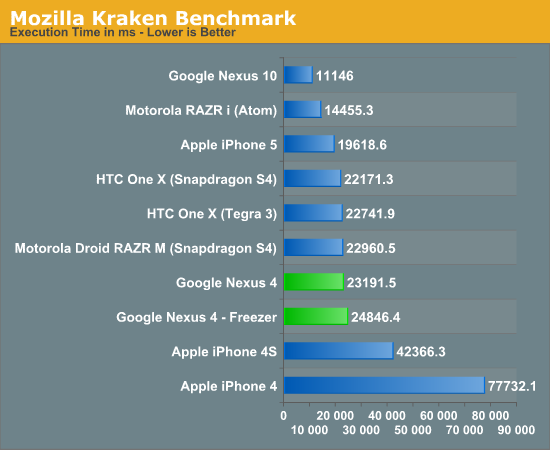
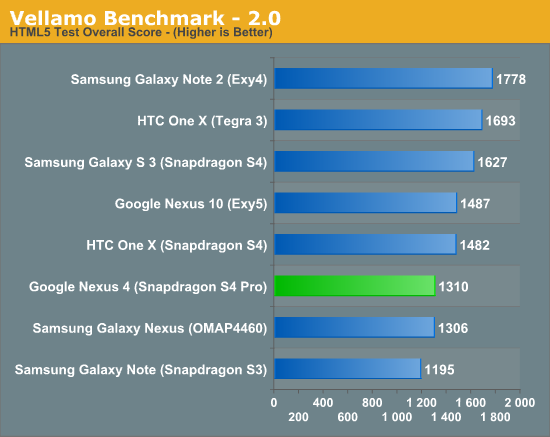
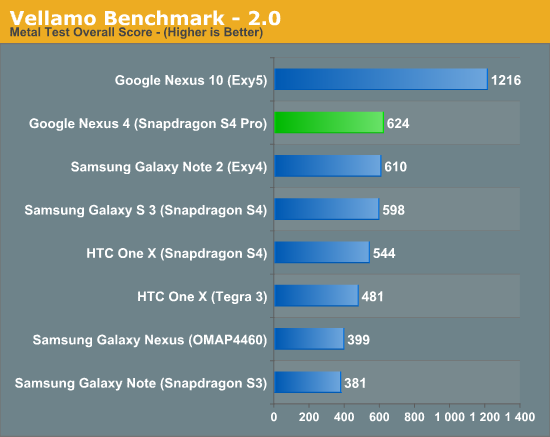
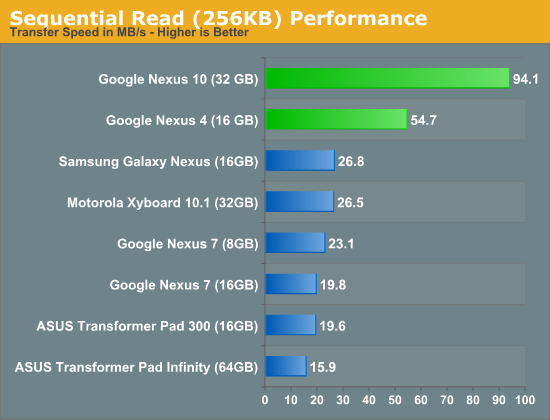
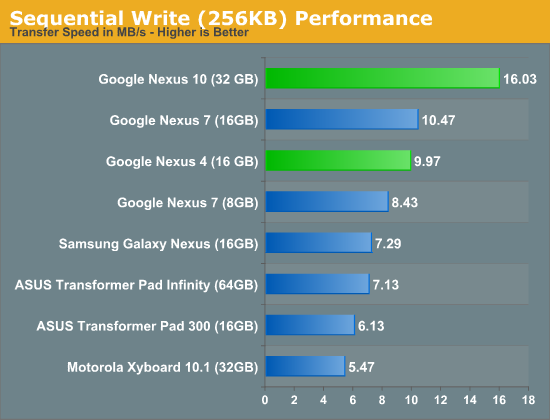
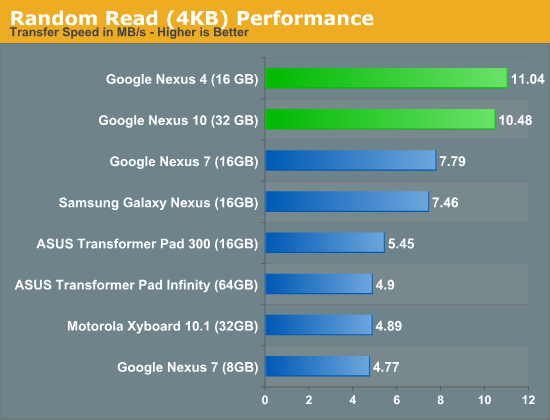
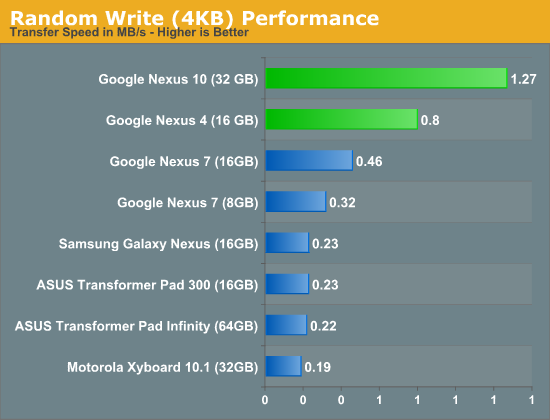
Our CPU performance side is unfortunately still dominated by JavaScript performance tests. The story there is that the Nexus 4 ships with Chrome (and originally shipped with a newer build of Chrome than what was on the market - we were running that updated version all along) and thus the mainline version of the V8 JavaScript engine. OEMs perform their own optimizations to the V8 library, and try to upstream whatever they can into the main project, but in the case of Chrome for Android that means V8 sans secret OEM sauce.










188 Comments
View All Comments
numberoneoppa - Tuesday, November 13, 2012 - link
Lovely review, Brian, as usual, but I have a question. Forgive me if I just glanced over this, but have you run your benchmarks using the newest OTA which rolled out over the last day or are these running the same software as those posted earlier in the month? In any case, it would be interesting to see if there are any changes in the XML file which seems to specify temperature shelves.Jorange - Tuesday, November 13, 2012 - link
Hi Brian,Can you please confirm that all GL Benchmark tests are run serially for all devices?, as this places them under a greater thermal load, then running the benches individually.
Brian Klug - Tuesday, November 13, 2012 - link
I do whenever possible, always. The issue is what happens when devices crash out before a full run (Optimus G) which then forces my hand to do this piece-by-piece kind of testing and reassemble a whole run.-Brian
MadMan007 - Tuesday, November 13, 2012 - link
You should note which devices have 'assembled scores' versus straight runs in your charts then. An asterik would do.xTRICKYxx - Tuesday, November 13, 2012 - link
By far the best Nexus 4 review; bar none.Kernel developers will easily raise the thermal throttling limit to a much higher temperature, but it is obvious there is a temperature issue.
suhan - Tuesday, November 13, 2012 - link
why is it that you don't use geekbench to measure the actual performance of the device?tuxRoller - Tuesday, November 13, 2012 - link
Because it is closed source thus we dont know exactly what paths it takes (meaning it could disproportionately harm one particular device over another)?Hell, do we need even know what compiler they use? Knowing that and the flags used would certainly be very useful.
HisDivineOrder - Tuesday, November 13, 2012 - link
...this site used to be about custom-built computers?We'd get driver reviews, we'd get hardware other than video cards, motherboards, and CPU's reviewed, we'd get the skinny on new custom PC hardware that was coming...
I'm waxing nostalgic here. I miss those days, I think. These smartphone reviews are just beginning to bore me to tears. Maybe I'm just old, but I miss the good ol' days. Back when phones were something we just lived with rather than something people seem to obsess over now.
Back when having the latest and greatest in computing was more about smart hardware selection and less about going to the store, slapping down your cc, and saying, "Gimme your best, barkeep!"
Medikit - Tuesday, November 13, 2012 - link
I remember those days really well. Mobile computing is the future of the industry. Furthermore Anandtech still reviews computer cases, HTPCs, and the latest, greatest hardware. I like to think of it as the best of both worlds.Alexo - Thursday, November 15, 2012 - link
> Mobile computing is the future of the industry."Mobile computing" will not get truly mobile until we get decent battery life.
Meanwhile, AnandTech keeps lauding devices that have more computing power than most of us ever utilize at the expense of battery life (not to mention non-user-changeable batteries, throttling, etc.)